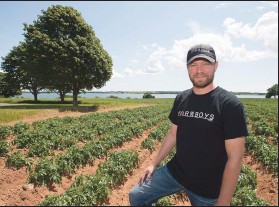Lethbridge Herald
23 Jul 2017
Dean Bennett
Alberta’s political landscape profoundly shifted Saturday as its two main conservative parties — enemies for a decade — overwhelmingly agreed to end their feud and work as one to defeat Premier Rachel Notley’s NDP. In separate votes, members of the Wildrose party and the Progressive Conservatives voted in a landslide to merge into the new United Conservative Party.
Wildrose supporters voted 95.4 per cent in results announced at a hotel in Red Deer late Saturday afternoon.
About two hours later, Progressive Conservative Leader Jason Kenney announced at Calgary’s Stampede Grounds that 95 per cent of his members ratified the proposed deal, which had been brokered by both parties in May.
“What a day for Albertans! What a day for conservatives and what a day for Wildrose members!” Wildrose Leader Brian Jean told more than 300 supporters.
“(It’s) a new beginning, where we’re one step closer to putting power back in the hands of the ordinary working people of Alberta.”
Kenney told his supporters that hope was on the horizon.
“We are renewing the Alberta advantage with this democratic decision made today. Tens of thousands of Albertans have decided to put the future ahead of the past (and) to focus on what unites us rather than what divides us,” he said.
The votes fire the starting pistol on what is expected to be a bruising leadership race, culminating in a decision on Oct. 28.
Kenney and Jean have already announced they will run, as has longtime PC strategist Doug Schweitzer.
Wildrose finance critic Derek Fildebrandt is also considering a run but said he’ll wait until the rules of the race are set before announcing his plans.
He also foreshadowed the rancour to come, saying no matter what happens, he won’t support his former boss, Jean.
“I’m not going to get into it right now,” Fildebrandt told reporters. “Today is a day about unification. “We’ll have plenty of time to beat the crap out of each other in the coming weeks and months.”
A founding convention will be held and the plan is to have constituency associations and candidates ready for the next election in spring 2019. The two caucuses — eight in the PCs and 22 in the Wildrose — will meet Monday in Edmonton to pick an interim leader.
The votes fulfil a plan launched a year ago by Kenney in his ultimately successful bid to become leader of
the PCs on a platform of merging with the Wildrose.
It was an historic coda for the Progressive Conservatives, a party that swept to power in 1971 under Peter Lougheed and governed Alberta for more than four decades before being swept aside by Notley’s NDP in 2015.
The Wildrose movement took root over a decade ago, composed in part by disaffected Tories who felt the PCs had abandoned their commitment to fiscal conservatism and grassroots consultation.
It was a bitter feud, with members even threatening to come to blows in the legislature chamber. PC legislature members at times bolted to the Wildrose benches and the Wildrose party almost closed up shop in late 2014 when then-leader Danielle Smith and most of her caucus crossed to the PCs.
Kenney says vote splitting leveraged Notley’s NDP to majority government in the 2015 election and only a united conservative party can prevent a repeat.
Kenney and Jean both say NDP policies — including a carbon tax and heavy debt spending for operations and infrastructure — are exacerbating a troubled economy buffeted by low oil and are
threatening to swamp future Albertans in unsustainable red ink.
As far as the NDP is concerned, the new UCP is a black wedding.
“This weekend was really about the parties being ready to embrace the worst in each other,” Deputy Premier Sarah Hoffman said in an interview from Edmonton.
Hoffman said the Wildrose are signing on to a PC party famous for its self-serving entitlements and the PCs are linking up with a Wildrose team determined to make life worse for Albertans by promising budget cuts estimated to run into the billions of dollars.
The Wildrose had a high hurdle to clear for the merger: 75 per cent had to say yes.
More than 42,617 Wildrosers took out memberships to vote. Of that figure 24,598 cast ballots, for a turnout of 57.7 per cent. Of the voters, 23,466 voted yes and 1,132 voted no to deliver the 95.4 percentage.
With the Tories, 49,200 registered to vote and 27,060 cast ballots, for a 55 per cent turnout.
Of the 27,060 ballots, 25,692 voted yes and 1,344 said no. There were 24 spoiled ballots.
The PCs needed just 50 per cent plus one for ratification.
 Canadian Press photo
Canadian Press photo


